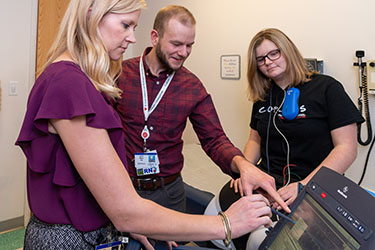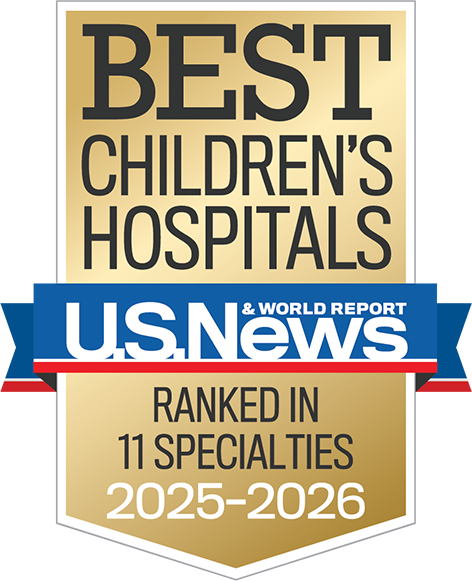 The St. Louis Children’s and Washington University Heart Center offers a dedicated Pediatric Cardiac Device Clinic for children with heart arrhythmias who have implanted devices such as pacemakers and defibrillators. The clinic’s electrophysiology team has two goals: First, team members help patients, their families and physicians better understand the workings of these complicated devices that act as sophisticated little computers. They then provide the best individualized care and programming of these complex implants for each patient.
The St. Louis Children’s and Washington University Heart Center offers a dedicated Pediatric Cardiac Device Clinic for children with heart arrhythmias who have implanted devices such as pacemakers and defibrillators. The clinic’s electrophysiology team has two goals: First, team members help patients, their families and physicians better understand the workings of these complicated devices that act as sophisticated little computers. They then provide the best individualized care and programming of these complex implants for each patient.
How the devices work
An arrhythmia is an abnormal heartbeat. In an arrhythmia, abnormal electrical signals through the heart muscle may cause the heart to beat too fast (tachycardia), too slow (bradycardia), or irregularly. When the heart doesn't beat normally, it isn’t able to pump blood to the body as well. That means the brain, lungs, and other organs may not get enough blood. This could cause the organs to not work as well and they may become damaged.
For some arrhythmias, an artificial pacemaker may be needed. The pacemaker is a small device that is put inside the abdomen or chest. It gives a small amount of electricity to the heart to keep it beating regularly. A child may need this if he or she has a slow heart rate.
An implantable cardioverter defibrillator is another type of device that is put in the chest or abdomen. It automatically sends a shock to stop an abnormal rhythm. Some ICDs also work as pacemakers.
An experienced team; a large, accredited program
St. Louis Children’s Hospital’s arrhythmia program is one of the largest programs in the nation and the largest in the Midwest. As one of only two electrophysiology labs in the country to receive the Intersocietal Accreditation Commission Cardiac Electrophysiology Accreditation, the pediatric arrhythmia program team sees a wide variety of cases from a broad geographic area.
What to expect when visiting the clinic
The Device Clinic is located at St. Louis Children’s Hospital’s main campus. Patients and their families can expect to spend about one hour at the clinic. Upon arrival, patients are first seen and have the first set of tests done. These tests may include an electrocardiogram (ECG), device check, echocardiogram and X-ray. The team compiles and shares the results from the tests and provides guidance for patients’ immediate needs, as well as guidance of what patients will need in six months, a year and even five to 10 years. The clinic allows its physicians to continue the conversation with patients and their families, helping them feel more comfortable knowing what is coming in the future.
Physician consultations
Recognizing that implanted devices are an important piece of a larger puzzle in caring for children with arrhythmias, the clinic’s electrophysiology team is available for consultation with cardiologists or other physicians to help manage the complicated devices of these patients.











